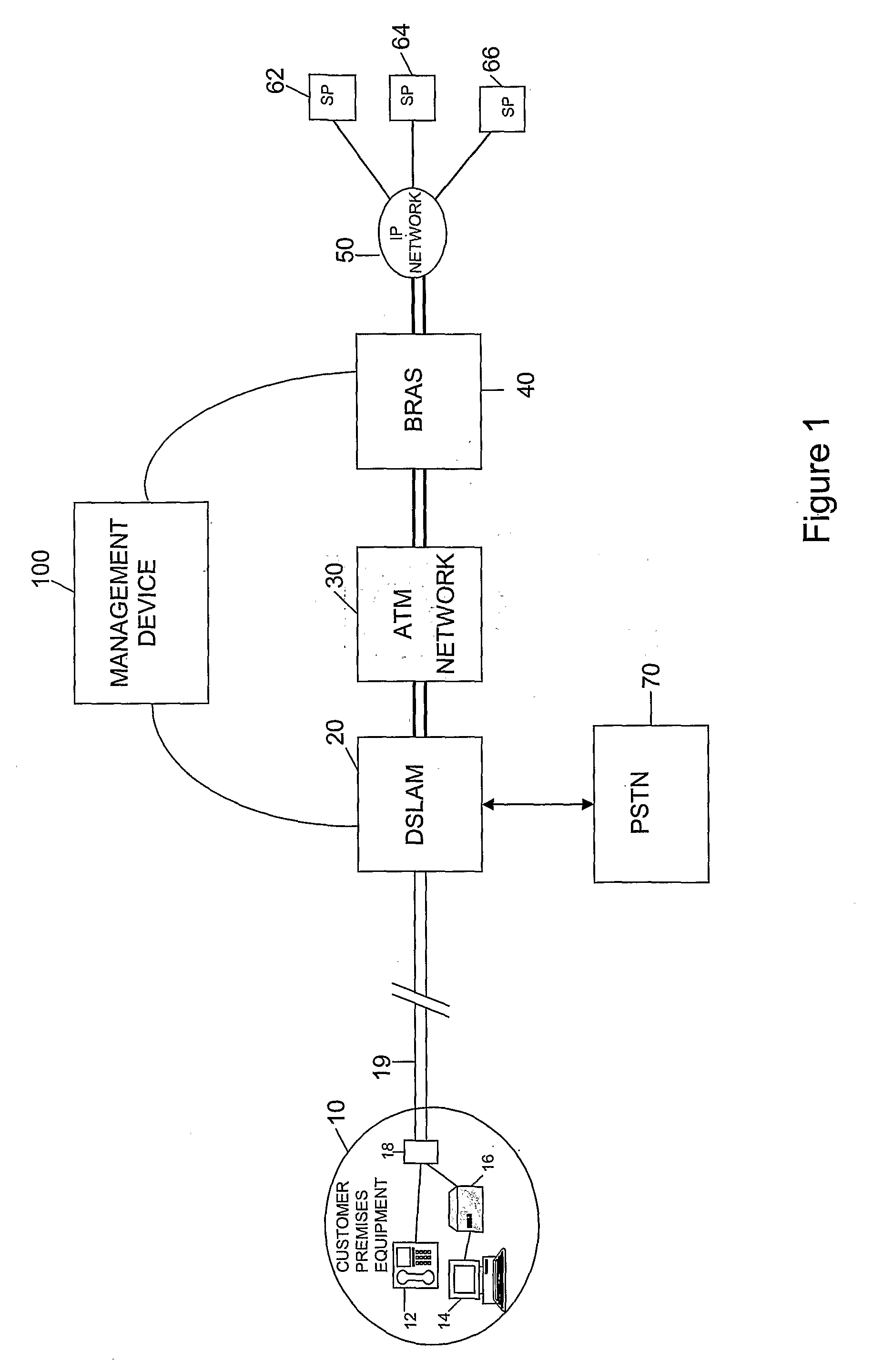Monitoring of network connections
a network connection and monitoring technology, applied in the field of data communication, can solve problems such as complete connection loss, and achieve the effects of reducing the snr margin, increasing the headline bit rate, and improving latency
- Summary
- Abstract
- Description
- Claims
- Application Information
AI Technical Summary
Benefits of technology
Problems solved by technology
Method used
Image
Examples
main embodiment
[0037]Referring to FIG. 1, a first embodiment of the present invention is illustrated in overview. A copper pair loop 19 (which forms part of the access network which extends between customer premises equipment 10 and the BRAS 40) connects customer premises equipment 10 to a DSLAM 20 located within a local exchange (also known as a central office in the US). The DSLAM separates normal voice traffic and data traffic and sends the voice traffic to the Public Switched Telephone Network (PSTN) 70. The data traffic is passed on through an Asynchronous Transfer Mode (ATM) network 30 which forms the remainder of the access network 19, 20, 30 (in the present embodiment, the ATM network 30 is British Telecom (BT)'s Multi Service intranet Platform (MSiP) ATM network). Connected to the ATM network 30 is a Broadband Remote Access Server (BRAS) 40 at which several IP traffic flows or ATM circuits from (and to) multiple Service Providers (SP's) 62, 64, 66 are aggregated (and disaggregated) via an...
PUM
 Login to View More
Login to View More Abstract
Description
Claims
Application Information
 Login to View More
Login to View More - R&D
- Intellectual Property
- Life Sciences
- Materials
- Tech Scout
- Unparalleled Data Quality
- Higher Quality Content
- 60% Fewer Hallucinations
Browse by: Latest US Patents, China's latest patents, Technical Efficacy Thesaurus, Application Domain, Technology Topic, Popular Technical Reports.
© 2025 PatSnap. All rights reserved.Legal|Privacy policy|Modern Slavery Act Transparency Statement|Sitemap|About US| Contact US: help@patsnap.com



